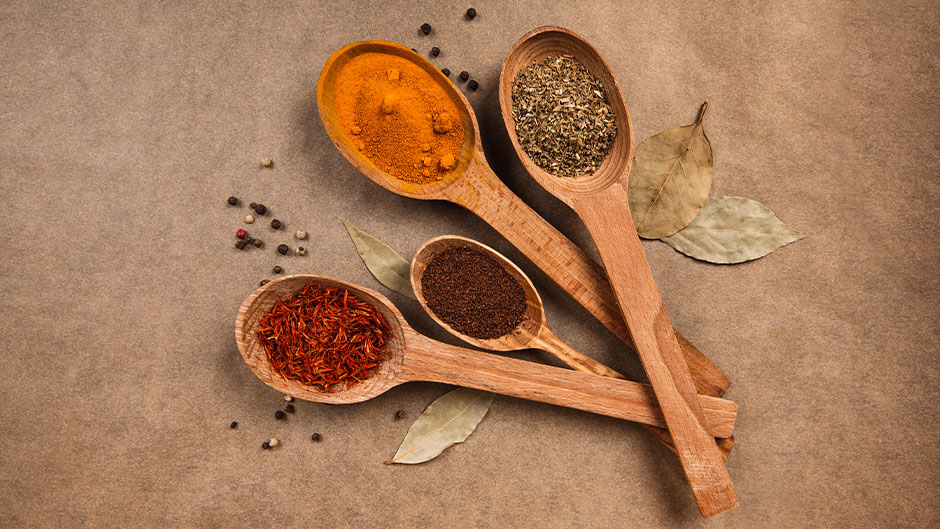Dr Des Corrigan Examines The Evidence Base For The Popular Saying, ‘let Food Be Thy Medicine And Medicine Be Thy Food’
The problem with clichés is that they are invariably and frustratingly true. Thus, the saying ‘let food be thy medicine and medicine be thy food’, usually attributed to Hippocrates, has become a modern cliché with more than a ring of truth to it. Many medicinal plants have a dual use as foods, usually in the form of flavourings and spices.
This month, I look at the evidence base for a widely used spice (cumin); the most expensive of all spices (saffron); and a trendy garnish beloved of foodies (pomegranate). Cumin is commonly referred to as a seed, but it is in fact a fruit, botanically related to fennel, dill, parsley, etc. As such, it is one of the umbelliferous fruits known to generations of older pharmacists. Cumin has been used as a spice for thousands of years in Indian, Middle-eastern and Tex-Mex cooking.
It is a major component in garam masala and curry powders. The major component of the essential oil is named with great originality, cuminaldehyde. As a medicine, cumin is used traditionally as an anti-inflammatory and antioxidant, as well as for its hypoglycaemic and hypolipidaemic effects.
There have been numerous clinical trials, many performed in Iran which, after India, is a major producer of cumin. An Iranian systematic review and meta-analysis of RCTs of cumin supplements on glycaemic indices was published in the February 2021 issue of Phytotherapy Research. The meta-analysis included 8 RCTs involving 552 participants found that cumin did not significantly alter fasting blood sugar or insulin levels, nor did it affect the Homeostatic Model Assessment for Insulin Resistance (HOMA-IR) results.
The reason saffron is the world’s most expensive spice is that it has to be picked by hand
These authors concluded that the results did not support the use of the spice to improve glycaemic markers in adults. In contrast, another systematic review and meta-analysis of many of the same trials conducted by a different set of Iranian researchers and published in August of last year in the Journal of Ethnopharmacology came to different conclusions.
This review also included eight trials with 469 participants, some with type 2 diabetes and others described as being overweight. The meta analysis showed statistically significant reductions in fasting blood sugar, HbA1C, HOMA- B (measuring beta-cell function) and in the Quantitative Insulin Sensitivity Check Index (QUICKI) level. There was no effect on insulin levels or on the HOMA-IR results. It will come as no surprise that both sets of reviewers called for further high-quality trials to confirm their results. On the evidence to date, it looks as if cumin will continue to be more widely valued as a spice than a medicine.
The reason saffron is the world’s most expensive spice is that it has to be picked by hand. It consists of the dried red stigma and style from the flowers of crocus, and a kilo involves collecting it from over 400,000 individual flowers. As a result, that kilo will cost about €6,000. Most Saffron is produced in Iran (90 per cent), with smaller quantities grown in Greece, Spain (mainly for use in paella) and Kashmir. The characteristic colour is due to the carotenoid crocin and the iodine-like smell is due to picrocrocin and safranal.
In TCM, it has been mainly used to treat depression, irregular menstruation, post-partum thrombosis, and bruises because of its claimed value in promoting blood circulation. Pharmacological studies have confirmed antioxidant activity (due to the carotenoids), anti-inflammatory and memory-enhancement activity. In Western medicine, it has been studied as a treatment for diabetes, Alzheimer’s dementia, depression, and anxiety.
According to a 2021 review of its potential clinical applications in the Journal of Ethnopharmacology, clinical studies with saffron extracts resulted in reduced fasting blood glucose (FBG) levels and waistline circumference. On the other hand, a 2017 RCT with just 27 patients suffering from type-2 diabetes given 30mg of extract daily for eight weeks gave results that only indicated enhanced renal and liver protection.
Other RCTs reported reductions in systolic BP after 12 weeks and in FBG and HbA1C levels in overweight or obese pre-diabetics. Several RCTs of an alcoholic extract showed benefits similar to both memantine and donepezil in reducing cognitive decline In Alzheimer’s.
Several small-scale clinical studies of saffron in depression have been reported from Iran, comparing it to fluoxetine, imipramine or placebo. Saffron extracts were reported to be superior to placebo and as effective as the standard antidepressants using HAMD scores as the outcome. The spice also gave positive results in patients with anxiety using HAMA and Beck Anxiety Inventory questionnaires to measure outcomes.
Other trials showed positive effects on sleep quality. Given that the raw material is so expensive, it is difficult to see a case for further studies and it is probably best left for food use. Years before pomegranate, its juice and seeds became trendy, my late mother bought me what she referred to as a ‘wine-apple’ every Halloween. It was many years later that I learned that this exotic fruit was pomegranate, and I have no idea why my mother called it a ‘wine-apple’.
I loved the taste of the juice which surrounds the seeds in what is technically called an aril. These arils are like rubies which is why, I suppose, they are so attractive to modern chefs wishing to add colour to dishes. In addition, there are many claimed health benefits from pomegranate consumption according to the BBC Good Food website, including reduction in the risk of heart disease, improvements in bone health, athletic performance and memory, as well as anti-inflammatory effects. This latter effect is perhaps explained by the fact that the juice is rich in polyphenols.
These anthocyanins, responsible for the red colour of the juice, result in pomegranate having three times more antioxidant activity than either red wine or green tea, according to a review in the Journal of Ethnopharmacology in 2021. Clinical trials in patients with hypertension have shown that drinking the juice daily for two weeks reduced angiotensin- converting enzyme (ACE) activity by 36 per cent, and systolic BP by 5 per cent. A 2017 review in Current Pharmaceutical Design noted findings from both animal and human studies showing that the juice can reduce BP in both the short and long terms.
Animal studies have shown anti-atherosclerosis effects that need to be replicated in human studies. A systematic review and metaanalysis of six RCTs involving 165 patients and 132 controls appeared in the September 2020 issue of Phytomedicine. The review looked at the effect of the juice on a variety of vascular adhesion factors but the results showed that only Interleukin-6 was affected. Given the powerful antioxidant effect, further trials of a standardised pomegranate preparation seem warranted.







